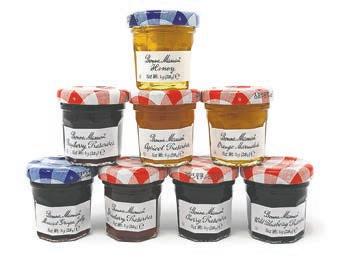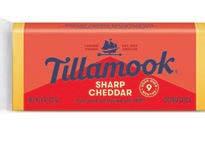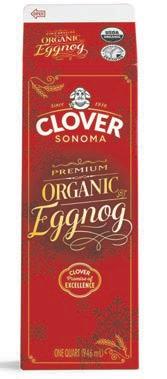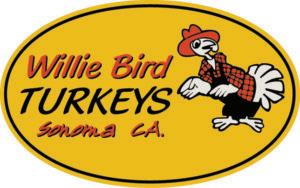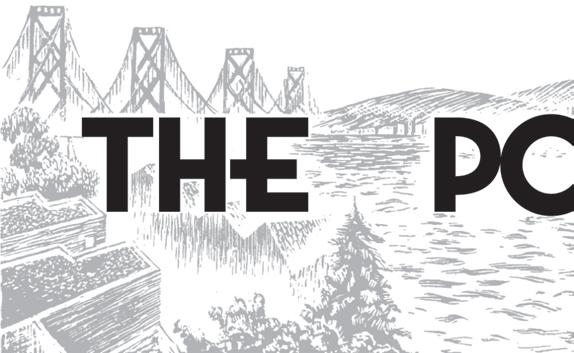
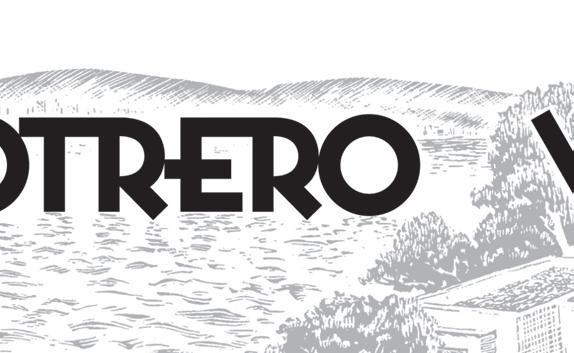
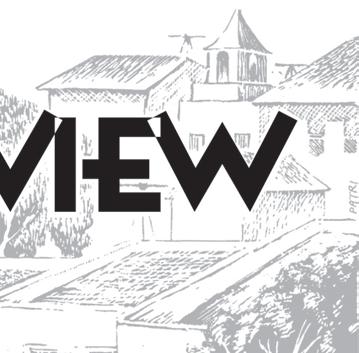




Potrero Hill residents met over Zoom in October to discuss new designs, public art opportunities, and potentially renaming Jackson Park. Participants generally wanted a greater amount of open space and an American Disabilities Act-compliant community center with interior and exterior bathrooms.
There was also support to add a dedicated off-leash dog play area, a larger, more accessible learning garden, and reduce congestion on the playing fields. Current plans are to relocate the clubhouse, which’ll allow the two fields to be separated, increasing the distance between home plates. The clubhouse and an addition would span 6,881 square feet.
Jude Deckenbach,executive direc-
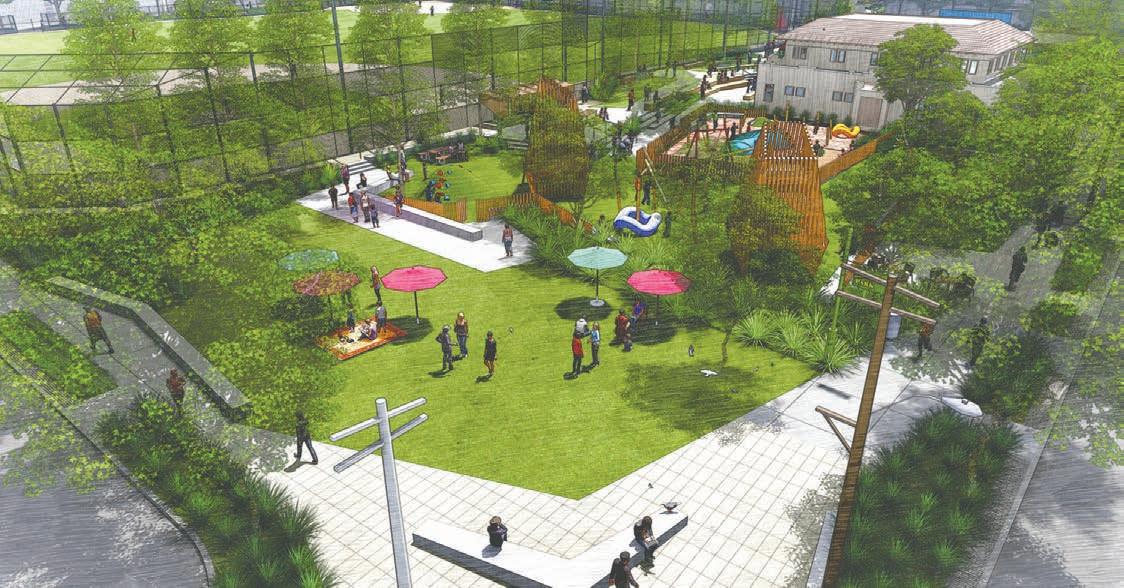
Mission Bay’s population almost doubled over the past decade. According to the 2020 U.S. Census, the neighborhood grew from 9,000 residents in 2010 to more than 17,400 two years ago.
What wasn’t long ago a marshy area with few built amenities has emerged as a mixed-income community with parks, open space, multiple dining opportunities, 6,060 market rate homes and another 1,456 affordable units. Between 2010 and 2020 alone 2,782 market rate and 633 affordable units were built, according to the San Francisco Office of Community Investment and Infrastructure (OCII).
“It is an example of what a city should look like when we build it from scratch,” said District 6 Supervisor Matt Haney. “Despite the pandemic, much of the development has occurred in the last three years. Before that, storefronts on Fourth Street were vacant. Now they’re full, with pet stores, restaurants, coffee shops, furniture stores, and boba shops. Since the pandemic began, there have been fewer community meetings and less opportunities for people to connect. Yet Mission Bay proper is almost built out. The most significant coming addition will be Mission Rock, the San Francisco Giants-linked development with approximately 1,200 residential units on the way.”
In the past 10 years the neighborhood has also seen completion of the Chase Center and construction of University of California, San Francisco clinical offices and laboratories. Mission Bay is defined by Berry Street to the north, the west by 7th Street, the east by the Bay, and the south by 16th Street.
“We’re thrilled that so many folks have found our area appealing and have added to the vibrance of our urban neighborhoods,” said Alice Rogers, president of the South Beach|Rincon|Mission Bay Neighborhood Association (SBRMBNA). “We are looking forward to the time when each of our individual neighborhoods, South Beach, Rincon, and Mission Bay, reach some critical mass.”
SBRMBNA was formed in part to foster community cohesion in the three emerging areas, with a “…long-term plan to split into three groups once there was enough community interest to support each neighborhood. For a while, it seemed that much of the housing in Rincon was purchased by non-resident investors. That had the effect of keeping the area feeling empty and lacking life on weekends. Thanks to the considerable work being done by The East Cut Community Benefit District, that’s changing, and neighborhood activity is being galvanized,” said Rogers.
The East Cut Community Benefit
District (CBD), a nonprofit, was founded in 2015 by property owners and others to improve the quality of life in the Rincon Hill, Folsom Street, and Transbay areas. The organization is supported by an annual assessment on properties.
According to Rogers, activities like Thrive City, which is sponsored by the Golden State Warriors at the Chase Center, have helped build a community hub.
“The streets have begun to bustle with folks of all ages and incomes, with a particular growth in families with small kids. All that work by planners over decades seems to have come to fruition with the well-integrated open spaces and public realm amenities… with everyone living in multi-family housing and the many different homeowner associations vying for attention with their own community building, it remains to be seen as to how neighborhood associations will morph to support this type of population,” said Rogers.
Bruce Agid, a SBRMBNA board member and San Francisco Eastern Neighborhoods Democratic Club president, sees Mission Bay as split into halves.
“Mission Bay North is a sliver of land north of Mission Creek. Mission Bay South is south of the creek. That
Dogpatch Hub faces an uncertain future after the San Francisco Port Commission rejected a proposal to site the hoped-for community center adjacent to Crane Cove Park at an October meeting.
In response to Commission request-for-proposals (RFP) to repurpose the historic Kneass building at 651 Illinois Street, Friends of Dogpatch Hub, a nonprofit whose seven-member committee has been steering Hub negotiations, pitched the Port on a blend of dining spaces, meeting rooms, youth programs, archival storage, and library services. The organization has raised more than $9.6 million for the project, with gifts from the University of California, San Francisco, $4.2 million, Potrero Power Station, $2.5 million, and Pier 70 Development Fund, $2.1 million.
“I’m very disappointed we didn’t succeed…,” said John Ramsbacher, a Friends of Dogpatch committee member. “It’s devastating to lose by just one point, and very arbitrary as well.”
Ramsbacher was relieved, however, that the for-profit proposal by Premier Structures also failed.
Jackson
Efforts to rename Jackson Playground are being resisted by longtime Potrero Hill residents who insist that it’s never been widely known that the appellation was taken from a U.S. President famous for killing Native Americans. Perhaps a way forward is simply to repurpose the designation. Musician Michael Jackson may not be a good pick, though his love of children is well known. Director Peter Jackson gave the world the Lord of the Rings and Hobbit trilogies, which, though a tad violent, many a kid has seen. A playground modeled after these films could be awesome, or scary. Stonewall Jackson, a notable Civil War character, has a great first name which might describe a solid park feature, but was on the wrong side of history. Everyone likes Samuel L. Jackson, and it’s easy to imagine an annual Samuel L. Jackson impersonation contest. Perhaps the best pick is Mahalia Jackson ; given the park’s proximity to Thee Parkside , not so far from Bottom of the Hill, it could be part of a musical tribute to the community. We do, after all, have the whole world in our hand.
If you’re looking for a date night or in the mood to celebrate, consider drinks and dinner at the fine establishments located at the corner of Third and 22nd streets. Start, or end, the evening with beverages at Magnolia Brewing, Dogpatch Saloon, or Yield, all of which are joyously shaking off the difficult times posed by the worst of the pandemic. Then treat yourself to a fixed priced gourmet meal at Anomaly, located in a space formally occupied by Serpentine. Chef Mike Lanham, a Culinary Institute of America graduate, is

a wunderkind, destined for greatness in San Fran-foodie. He previously worked at Auberge Du Soleil, Solbar, Spruce, amongst other places. Highlights of his present offerings, with a base price of $99, are “An Egg; Sort of Potato & Yolk,” a whipped concoction with excellent mouthfeel, “Pao de Queijo Smoke,” an unexpectedly delightful cheese bread, and “Banana and Black Sesame” the perfect dessert with which to end a delicately sumptuous evening. The wine pairings do exactly what they’re supposed to do, creating an intimate relationship between food and drink that makes each better than they would be otherwise. Like that marriage or anniversary you’re celebrating. “My style is heavily influenced by modernism,” Lanham said. “However, it’s very


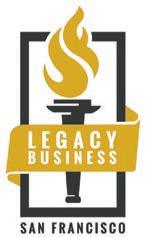
important to note that we use techniques tastefully. As for presentation, we try to oscillate between presenting things sculptural or cleanly. We try to avoid burying things in flowers while your food gets cold. We do however, love to use locally foraged greens as they make sense with a dish.” Anomaly is presently serving Thursdays through Saturdays, with two seatings.
Hard
Try Harder, a film that follows Lowell High School seniors as they obsess over, and eventually mostly fail, to get into a handful of the country’s most sought after colleges, opens this month at the Regal Stonestown Galleria. The documentary, by Debbie Lum , aptly captures the odd tunnel vision that grips America’s teenage high achievers, who believe that the
SHORT CUTS continues on page 11
I’ve lived in Potrero Hill most of my life and have never associated Jackson Park’s name with U.S. President Andrew Jackson’s views or political legacy. Also, I’ve never heard anyone complain about the park’s name.
We know Jackson Park as a playground that sometimes has two softball games being played – one in each corner – children sliding down a slide, others playing in the sand. How innocent is all this? And yet someone decided that there must be a name change! Who comes up with these ideas?
Please leave the name alone. We, who live here, all know it as a great park in our neighborhood.






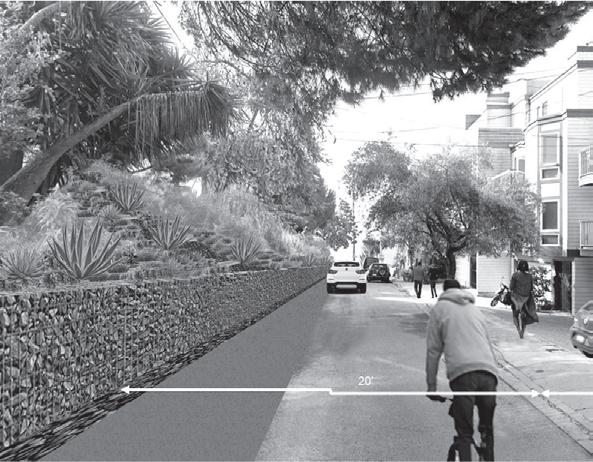


 BY BRIAN ADAM
BY BRIAN ADAM
A bit more than five percent of District 10, which includes Dogpatch and Potrero Hill, consists of green space, compared to 13 percent for San Francisco as a whole. Residents have steadily worked to remedy this deficit, successfully advocating for community gardens and green patches. These efforts created the Kansas Street Community Garden, Arkansas Friendship Garden, Starr King Open Space, Carolina Green Space, and De Haro Community Garden, amongst other commons.
Now comes the De Haro Block Community Garden. For the past decade or so, De Haro Street residents have tended the median alongside 1300 De Haro, an effort that accelerated with onset of the public health crises a couple years ago.
In 2020, 1300 De Haro block residents weeded the divider, planted drought resistant vegetation, and launched regular cleanup efforts. Block inhabitants told the View that the work helped maintain a degree of normalcy during the pandemic.
Unexpected challenges emerged along the way. A one-way street sign was abruptly installed on the quiet road. The San Francisco Fire Department announced that upper De Haro was too narrow for a fire engine. When community members asked the San Francisco Department of Public Works (DPW) to repair the crumbling road they were told it was an “unaccepted” street, with care of trees and
the road residents’ responsibility.
In City parlance, “unaccepted” streets are those that don’t meet various qualifications: width, paving, sidewalk condition, and the like. Unaccepted streets aren’t considered DPW’s responsibility. What started as a median beautification effort revealed a host of issues.
A Hill resident who worked for the San Francisco Park Alliance walked by the De Haro Block Community Garden and recommended it partner with the Alliance; by the end of 2020, that relationship was sealed.
The San Francisco Park Alliance supports community greening and recreational spaces. It was founded in the 1970s as Friends of Recreation and Parks, assuming its modern form when it merged with the Neighborhood Parks Council in 2014. The nonprofit has recently been subject to municipal corruption investigations, which uncovered poor controls over financial dealings by the organization, but no incidences of actual wrongdoing.
Over the past two years the De Haro Community Block Garden has set its sights on securing a Community Challenge Grant. Funded in 1991 through a ballot initiative, the Community Challenge Grant Association awards monies yearly to projects that improve public spaces: art installations, cultivating native plants, and expanding parks. Since 2019, close to half a million dollars have been awarded to projects throughout Potrero Hill and
GREEN THUMB continues on page 15


 BY MAX BLUE
BY MAX BLUE
Beauty has a sordid history in art. Once held up as the most essential aesthetic principle, beauty has been championed, diminished, and had to fight for its value. An esthetic of pain has taken center stage in twentieth and twenty-first century art, emphasizing artists who express or parse personal struggle in their work, often correlating to an aesthetic that places more emphasis on content than technical mastery.
Exhibitions of suffering offer viewers and artists a sense of empathic
solidarity. But at the cost of a diminishing appreciation of beauty, a kind of Catch-22 that serves to further elevate suffering as an antidote.
Brigitte Carnochan’s solo exhibition Still Beauty, on view at Themes + Projects, 1275 Minnesota Street, explores the aesthetic principle of beauty in two distinct series of photographs. The major body of work are large pictures of floral arrangements Carnochan made throughout 2021, bringing to mind the still-lives of Flemish painters.
Mistaking Carnochan’s photos for paintings would, in fact, not be such a mistake. The photos were achieved using a process Carnochan calls “painting with light,” in which the photographer uses a flashlight to highlight various elements of the subject during a long exposure. Multiple takes are then stitched together digitally to achieve the finished product. This method makes the photographs appear hyper-real while imbuing them with the luminescence of an oil painting.
Bowl of Cherries reads like a classic still life with arrangement of fruit and flowers; Yellow Lillies puts greater emphasis on the floral array. Roman Head incorporates a Classical bust, evoking further communion with art history. A close look at each composition betrays the fact that they’re made of multiple exposures: blurred edges where one take overlaps the other become evident, lending to the painterly
quality of the work. Inclusion of pinned butterflies in each picture feels like a reminder of the fleeting capture of a photograph, even if Carnochan’s process defies this.
Process has always been at the forefront of Carnochan’s practice, her work evolving alongside technological advancements in photography. She’s experimented with alternative and antiquated processes.
A second series of smaller photographs, dated 2020, accompanies the still-life’s, combining cyanotype and platinum printing processes in which emulsion is painted directly onto a sheet of paper and a large negative is exposed directly to sunlight. These pictures have a drawn quality, akin to sketches, where the larger photographs occupy the space of painting.
These photographs veer away from the still-life composition, focusing on single elements and smaller moments in nature. Natural Wonders #66 Fern shows a drooping fern blade visited by a kaleidoscope of butterflies. Natural Wonders #71 Rose Vase reads like a pared down version of one of Carnochan’s light paintings: a delicate arrangement of roses sits in an antique vase, not a full-blown collection but perhaps flowers for the table. Whether or not these pictures are staged like Carnochan’s still lives, in both series she achieves a sense of

effortlessness: the unselfconscious character of natural beauty.
“Beauty means harmony” Carnochan said. “It’s not war. It’s peace.”
The value of a work of purely aesthetic beauty is not in its portrayal of struggle; its worth is in the fact that it doesn’t portray struggle. Beauty alleviates pain. In observing beauty, we find solace in a lapse, however brief, from the constant pressures of our lives.
Still Beauty is on view at Themes + Projects through December 23, Tuesday to Saturday, 11 a.m. to 6 p.m.










As life has begun to return to normal, Potrero Hill buyers have been exceptionally active. Many singlefamily homes and condominiums are selling at strong prices with multiple offers as buyers take advantage of low interest rates. If you have been thinking of selling your home, now may be an excellent time to take advantage of strong demand from buyers. Sales
The average sales price for a home on Potrero Hill this year has been $1,943,658.
If you’d like a free report on the value of your home, call Tim Johnson at 415-710-9000.
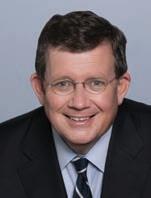
Tim Johnson
415.710.9000
tim@timjohnsonSF.com
www.timjohnsonSF.com
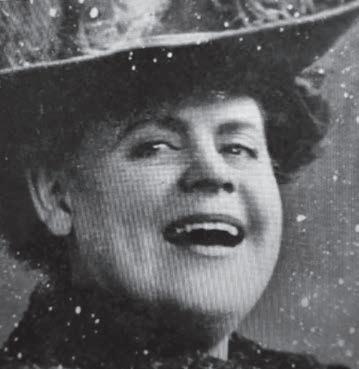
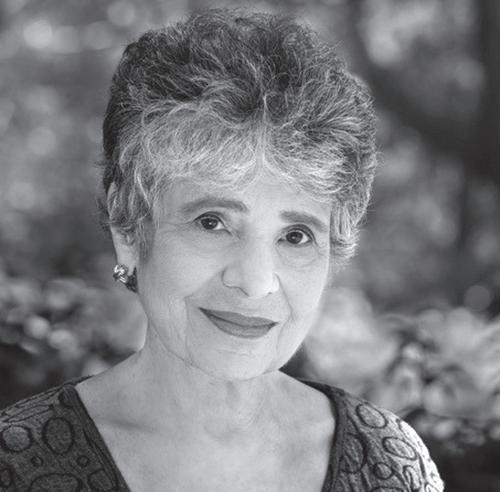

 BY JUDY GODDESS
BY JUDY GODDESS
This month playwright/lyricist, Diane Sampson, and musician/cabaret performer, Lauren Mayer, will unveil what they accomplished during the pandemic. Living Large, their musical about the lives and loves of Marie Dressler, will debut on December 10 and 11 as a reading at the Potrero Stage Theater.
Though Bay Area artists Sampson and Mayer had admired each other’s work, their collaboration was sparked by producer Tim Heitman.
“I was looking for a woman of a certain age, Jewish, local, to write a libretto with a wonderful composer/ lyricist,” said Heitman.
“He’s our doula,” Mayer explained.
With Heitman’s encouragement, Sampson and Mayer spent the bumpy months during shelter-in-place orders creating a musical about Marie Dressler, Hollywood’s biggest star in the 1920’s and early 1930’s.
We “discovered the joy of collaborating with someone equally committed to the work,” Sampson said. “We work so well together, it’s hard to remember who did what.”
“I think you wrote this,” Mayer said, sitting at a piano, striking honkytonk chords, music that was popular in Dressler’s time.
“No, it was you,” Sampson corrected her. “We both edited it, so it’s hard to tell.”
Heitman originally planned to produce a musical about Frances Marion, one of the most renowned American screenwriters of the twentieth century. Sampson and Mayer, however, became intrigued by Dressler.
“Dressler is like us,” Mayer explained. “She was an older woman

More trees and sidewalk gardens for Potrero Hill. The GBD is partnering with Friends of the Urban Forest to add sidewalk gardens and street trees to the 400, 500, and 600 blocks of Vermont Street. Help us plant on Saturday morning, January 29 starting at 9:30 am. To be placed on the volunteer list and get more details, email us at info@GreenBenefit.org
GBD Board of Directors nominations open this month for elections in March. Interested in serving with the GBD? Email us at info@GreenBenefit.org
Starr King Open Space
Please join our monthly volunteer days on the second Saturday of the month from 9:30 a.m. - 12:30 p.m. This month it is December 11th.
Also, feel free to join our monthly meetings which are open to the public, done via zoom for now, the third Monday of the month at 7 p.m. This month it is canceled but will be back in January.
If you can, please donate to help keep Starr King Open Space open, accessible and well maintained for our neighbors. www.starrkingopenspace.org
Potrero Boosters Neighborhood Association
Be in the know. Meet your neighbors. Make the Potrero a better place. We’re meeting virtually on the last Tuesday of each month at 7pm. Go to www. potreroboosters.org for details.
who, through the course of her life and career, struggled to come into her own and never gave up.”
In an era and medium where young, petite, women were idolized, Dressler parlayed an ungainly appearance into a comic persona, winning acclaim in vaudeville, Broadway, and Hollywood. Along the way she broke with tradition, both in her personal and professional lives; loving who she pleased, standing up for the underdog, and supporting a union for chorus members. Her greatest success came when she was older; Dressler received an Oscar when she was in her 60s.
Sampson and Mayer are over 60. Sampson’s previous musicals include
The Tale of Sleeping Cutie, and Oh, Progeny!
“I wrote about what I knew,” said Sampson, a mother of two boys.
Mayer, who has written and performed satiric political songs, musical revues and cabaret acts, is a five-time recipient of the San Francisco Cabaret Gold Award.
A staged reading is a step along the trajectory towards full-scale production. The director and actors are professionals; actors aren’t expected to memorize their lines.
The December performances will be live and virtual. Tickets are available at https://LivingLargeMusical.com/
If you’ve made your way past 1501 Vermont Street you might’ve noticed Books Inc.’s unassuming office and warehouse, with its caricature of a friendly mustachioed sun hovering above the loading docks. Don’t judge this book by its cover, though. Books Inc. distributes to its own Bay Area stores, hosts book signings by local authors and workshops for those who aspire to become one and publishes many different genres of literature. While the main office and warehouse has been located in Potrero Hill for 16 years, the businesses’ lineage can be traced to 1851, during the California Gold Rush.
The tale of Books Inc. is the story of the ‘American Dream.’ It starts with a Bavarian immigrant, Anton Roman, who arrived in the United States in 1849. Just two years later Roman was flush with gold extracted from the hills of Shasta City, California, where he opened his first bookstore, Roman’s Books.
In 1857 Roman moved to San Francisco. He setup shop on Montgomery Street, just north of California Street, where he started a magazine, Overland Monthly. Roman hoped to “help the material development of the West Coast”. The first issue contained poetry and verses by Californian writers, titled Outcroppings. He published books by Western authors, including Brett Harte, who edited the first edition of Overland Monthly, and whose romanticized tales of the Gold Rush era drew nationwide attention. In 1872, Anton published Mark Twain’s Roughing It. Many books printed on the West Coast were marked with “A. Roman” on their spines.
Roman’s longtime partner and protégé, Alex Robertson, eventually bought the business. He rebuilt the store after it burned to the ground during The Great San Francisco Earthquake of 1906. Located on 336 Sutter Street, it had a new name, Robertson’s Bookstore. When Robertson died in 1924, his brother, Harry, sold the retailer. The buyers, Leon Gelber, former head of the Emporium’s book department, and Ted Lilienthal, son of longtime Anglo Bank president, P.N. Lilienthal, changed the name to Gelber, Lilienthal, Inc. and established
Lantern Press, which continues to publish books to this day.
Across town, in 1946 Barbara Beach Thompson and Lewis Foorman Lengfeld, opened a bookshop, Books Inc., at the Fairmont Hotel on Mason Street. After Gelber’s death in 1948, Lilienthal merged his store with Thompson and Lengfeld’s, consolidating under the name, Books Inc.
Lengfeld expanded the business far beyond the Fairmont. From 1950 to 1993 he hosted a televised book review program. By 1974 Books Inc. had 26 stores throughout the West, with outlets in California, Colorado, Texas, and Washington State.
Lengfeld died in 1995, leaving the business with his most trusted employees, including Michael Tucker and Michael Grant. The enterprise they inherited, though, was in danger of disappearing. The advent of chain bookstores and big box retailers had shifted market demand. Tucker and Grant filed Chapter 11 bankruptcy, closing 13 of 15 California locations. With only two stores remaining, things looked bleak for “The West’s Oldest Independent Bookseller.”
In 1997, with Tucker overseeing operations, Grant heading business administration, the enterprise emerged from bankruptcy, expanded to four stores, with a fifth opening in 1998. In the tradition of Roman and Lengfeld, each Books Inc. location employed literature specialists who focused on the specific needs of their respective neighborhoods, hosted children’s readings and book clubs, and sponsored book launches for local authors.
Grant passed suddenly in 2000. Tucker continued to grow the business, opening a store in the middle of Downtown Disney in 2001, as well as operating Compass Books inside San Francisco International Airport.
With well more than the 30 years in business, meeting the criteria of being an invaluable cultural asset to the City, in 2016 the San Francisco Board of Supervisors added Books, Inc. to its registry of Legacy Businesses. Tucker retired in 2020, leaving stewardship of Books Inc. in the hands of his protégé, Andy Perham.
Now with 10 stores, more than 200 employees, and 170-year-old history, the tale of Books Inc. is a worthy read.
San Francisco developers Ronaldo Cianciarulo and Workshop1 want to develop a roughly 603,286 square feet life science laboratory complex on 3100 to 3150 Third Street, a property owned by 3150 Third LLC and 3240 Mindful LLC. The site is the largest of three properties the team wants to cultivate as life science labs in Dogpatch and Potrero Hill, the others located at 1401 Illinois Street and 1111 Pennsylvania Avenue.
The Third Street property is zoned for Production, Distribution, and Repair 2 (PDR-2), which allows laboratory space. The land stretches from Dogpatch to Bayview, bounded by Tennessee Street to the west, Third Street to the east, Cesar Chavez Street to the north, and Islais Creek to the south.
Existing warehouses would be demolished on the site, replaced by two new edifices separated by a 7,200 square feet pedestrian plaza. A 5,608 square feet shoreline greenway would border a proposed public boardwalk promenade along Islais Creek that’d be constructed by the Port of San Francisco.
“The larger of the two buildings, at 3150 Third Street, is set to be 85 feet tall and six stories,” said William Mollard, Workshop1 principal. “It will be 80 percent lab space, with 20 percent light industrial space on the ground floor. The smaller building, at 3240 Third Street, is set to be 40 feet tall and three stories. This is the one that abuts
the Islais Creek Channel. This second building will be 100 percent lab space. Despite the COVID-19 pandemic, demand is surging in the City right now for lab space. Lab work has to be done in person.”
Laboratory space rents for close to $100 per square foot, compared with $82.50 a square foot for office space, according to Cushman and Wakefield Research and Statista, respectively. Laboratory space has become com -
mercial real estate’s hottest property, with strong demand from well-funded biotechnology companies.
Still, J.R. Eppler, president of the Potrero Boosters, whose members live in Potrero Hill, Dogpatch, and Showplace Square, said neighbors of the development are concerned that the project will become office rather than laboratory space.
“That would not be in line with the Production, Distribution and Repair
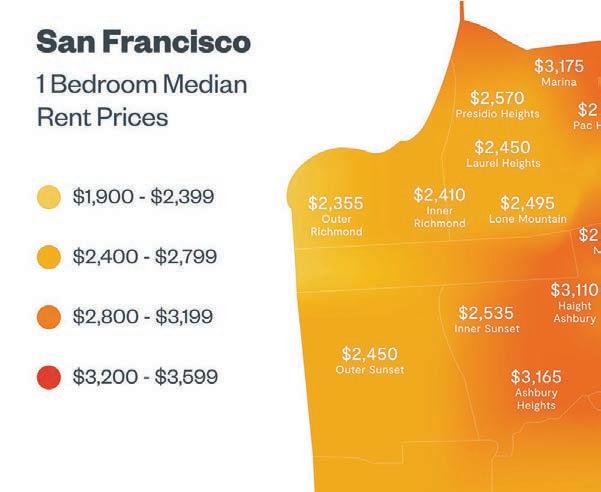


zoning of the parcel,” said Eppler. “In addition, we need to figure out how vehicular traffic would flow in and out of this location. Since the second building is next to Islais Creek, we’d like to see a path and parkway built to the water. There is an opportunity for the complex to have a very long frontage on Third Street. This offers an opportunity to artistically distinguish the
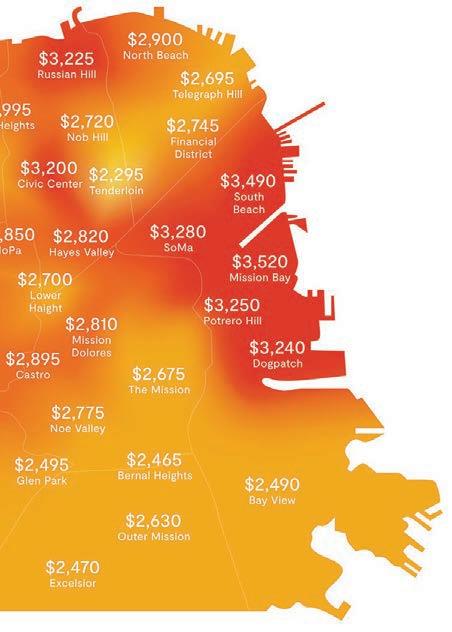
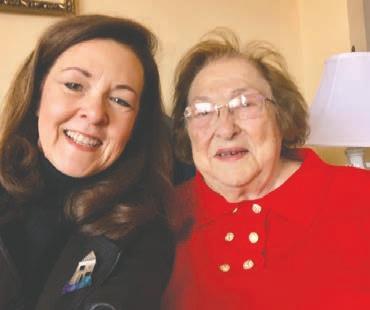
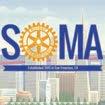
LIFE SCIENCES continues on page 11 Melinda
Your
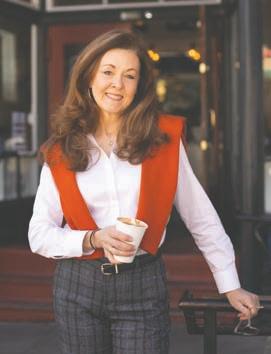
“It costs the same to build an “affordable” house as it does a market rate one,” my friend, Chris Block, presently San Francisco’s Chronic Homelessness Initiative Director, told me almost two decades ago.
That’s still roundly true. Modest savings can be achieved by deploying different construction techniques, materials, and modular units, such as those manufactured by Factory_OS. Mostly, though, the only way to significantly lower costs is to build (much) smaller units, with communal – shared bathrooms and kitchens – amenities, thereby reducing the number of appliances and fixtures that need to be installed; slash borrowing rates; or secure subsidies, such as tax waivers, credits or direct provision of land or services.
Despite knowing these challenges, several years ago I helped launch an affordable housing company in Rwanda, an East African country that’s home to more than 13 million people. Shelter quality there varies tremendously depending on income and location. Poorer people in rural areas mostly occupying
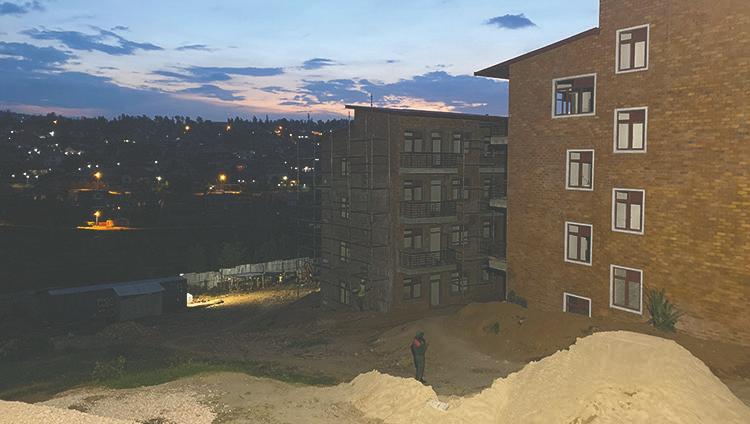
mud walled homes, with little access to indoor plumbing or electricity. In contrast, over the past decade the capital, Kigali, has been transformed from a city of dirt roads, traditional clay and thatched roofed houses, and a handful of cafes and western-style restaurants to one in which even a five-star tourist would be comfortable. While asphalt-paved streets aren’t universal, the urban area now features a mix of modern medium-rises, elegant villas, and basic, tin-roofed brick homes that might fetch $100,000 or thereabouts in Detroit or Dayton. Few units are available for less than $60,000; almost none below $30,000.
See Far Housing – named after a Rwandan saying, “if you see far, you will go far” – was determined to build quality, medium-rise residences in Kigali, priced to be affordable to working class families: teachers, civil servants, tradespeople. We planned to offer a mix of studios to four-bedroom apartments that, if not at San Francisco standards, would pass muster as solid entry level homes in Michigan or Ohio, within reach of families with annual household incomes of roughly $15,000. With apartment ownership roughly

as desirable to Rwandans as it was to Americans in the 1950s, communal amenities – playgrounds, athletic fields, gardens, even a first-of-its-kind vehicle sharing pod – would be important selling features.
Neither I nor the rest of the management team drew salaries or were even reimbursed for the 20- to 25-hour flight to Kigali from the East or West Coasts. But we wanted to make a profit, mostly to be directed to AgahozoShalom Youth Village, which’d emerged from Rwanda’s mid-1990s genocide to take care of more than 500 vulnerable youth, and for which I was a founding board member.
When See Far started out the
City of Kigali was eyeing it for use as its first central sewage treatment plant, an unlikely outcome given that another site was already being developed for that purpose. Fortunately, the general plan was being revised, with strong interest in increasing housing supplies. See Far was able to rezone the property, for which we’d purchased an option, for medium density residences, sharply increasing its value.
We secured financing from sympathetic, extremely patient, American and Swiss investors, and started to build our first 52 units on a halfhectare, a stutter step to constructing another 600.
Every developer on the planet knows that nothing proceeds as planned. The trick with construction is knowing when to zig, when to zag, and sometimes, when to quit. The first brick in See Far’s wall, so to speak, was SKAT. Brick is beautiful and can be made in Rwanda using amply available clay. But SKAT’s approach wasn’t engineered for the up to fivefloor buildings we were developing, civil engineers in Rwanda had little knowledge of its design capabilities, with the blocks notably more expensive
It costs the same to build an “affordable” house as it does a market rate one.
than SKAT predicted, and difficult to source. Bricklayers tended to slop on too much mortar, creating an uneven effect that wasted cement, expensively imported from Tanzania, degrading any lingering savings that might’ve been squeezed out of the process. Our expected profits ticked down a notch.













Rwanda government offered to provide public infrastructure – roads, water, septic, and the like – at no cost if a development either was medium density, or at least 70 percent of the units were priced at $35,000 or less. San Francisco, where homes sell as soon as they’re built, requires no more than 30 percent of new houses in a complex be affordable. Securing infrastructure subsidies was essential for the project to be profitable. See Far eagerly opted for the medium density scheme, voluntarily proposing that more than half the units meet the government’s affordable criteria. This was possible, in part, through the use efficient brick technology innovated by the Swiss Agency for Development and Cooperation, SKAT bricks, with the less expensive units tight three bedrooms or smaller.
To build homes See Far needed land. Our team identified a beautiful 7.5-hectare parcel not far from the Kigali International Airport, for sale at a quite reasonable price, mostly because it was zoned industrial. The
Not that there are many alternatives. A landlocked country with no rail access, importing anything into Rwanda is expensive. Other than clay, few natural resources are available: no significant forests for wood harvesting, limited capacity to produce cement, ceramics, or even metal frames. Experiments are underway to develop bamboo and recycled plastic as a roofing material; rammed earth offers niche opportunities. The only available cost-effective substitute for bricks is CLC blocks, dependent on imported bonding material and only recently available. Unskilled labor is cheap, accomplished workers hard


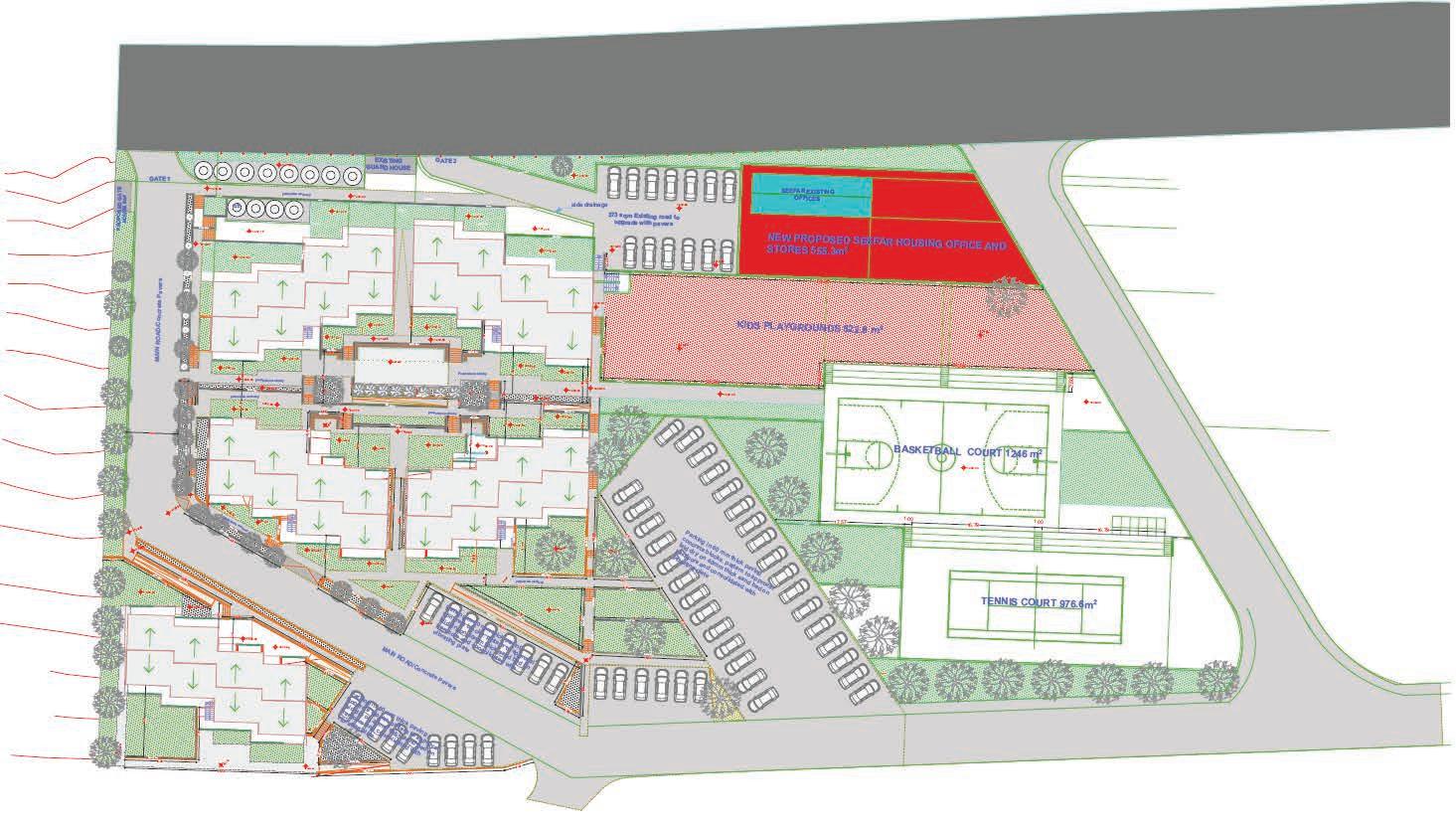
to fund.
Construction was going well, managed by a quite capable South African, Johan Geldenhuys, with procurement handled by a dedicated and skilled Rwandan, Eric Kalisa. There were workforce issues, to be sure, with a deficit of truly skilled tradespeople and middle managers. The government was slow walking our infrastructure subsidy submission, requesting multiple, repetitive, rounds of redesign requests and clarifications.
Almost half the units were presold, with small deposits down. We’d engaged a spirited team of pro bono architects in Monterey and San Francisco who were carefully planning the next phase.
Then, COVID happened.
Supply chain disruptions; lockdowns; curfews; rapidly escalating materials prices; more lockdowns. See Far’s immune-compromised (volunteer)
chief executive officer, Micky Padway, contracted COVID. After more than a week of dire worry she surfaced back into wobbly health, but was largely grounded in New York, unable to risk travel. I flew to Rwanda several times during the pandemic, getting tested repeatedly, but left early from a trip in the fall of 2020, fearful of being trapped in the country lest I be virus exposed. Did I mention lockdowns?
After rendering preliminary approval for our medium-density scheme to receive infrastructure subsidies, the Rwanda government notified us that, given the ruin of their general fund, that was no longer possible. We’d have to hit 70 percent affordable, which’d open access to a largely unused pot of World Bank affordable housing monies.
We recrafted our pricing, stretching to hit 70 percent. It was impossible, especially given that, apart from an infusion of international financing, the global pandemic had flatlined the Rwandan economy. The number of

presold units dribbled to a small handful. The government didn’t respond to our Hail Mary infrastructure requests. Our homes wouldn’t sell unless toilets flushed and lights switched on, at a cost of roughly $1 million.
Insert the expletive of your choice here.
We zagged, securing infrastructure financing from a sympathetic social investor, betting that the government would ultimately return to its original medium-density agreement. Backed by American and European donors, the government waived value-added taxes for investors, a conceptual 18 percent savings on materials, though
challenges securing the exemption, and eligible vendors jacking up their prices, halved that value.
Construction delays, material price inflation, extra expenses for a vain attempt to secure government subsidies had eroded profits on our 52 units. But our land’s worth increased, potentially making up for these losses in the long run.
We hope to finish the units next month. We don’t (yet) have the $100,000 needed to include a children’s playground and athletic fields, amenities that’d fully demonstrate the benefits of medium density living. Sales are picking up, though the most expensive units, the four bedrooms, have yet to attract buyers. We’re optimistic that once the homes are fully outfitted with doors and windows, lighting fixtures and water, they’ll sell. Then again, if we weren’t optimistic we wouldn’t be building affordable homes in East Africa.
Like many a developer, if we knew how hard the voyage would be we’d never have started it. But then, 52 Rwandan families wouldn’t have a nice place to live, for many their first step on the ladder of home ownership.
With almost no other affordable housing developers active in the country, the government is considering lowering its affordability percentage to 40 percent for medium-density complexes, making good on its original infrastructure offer. Our fingers are crossed, while our minds anxiously mull over what to do next.
See Far is raising funds for a playground; please email editor@ potreroview.net

Now through Sunday 1/30/2022
Film: “Illuminated Frames”
Drawing inspiration from nature and optical effects, these imaginative light studies offer a landscape of visual impressions. The cinema’s dimmed atmosphere sets the perfect scene to take in this array of colorful illuminations of brilliant ideas. $19.95 to $29.95. Exploratorium, Pier 15. For more information, including showtimes and tickets: https://bit. ly/32ckQ94
Saturday 12/4
Center for Asian American Media with archival images from the Manilatown Heritage Foundation. 5 p.m. $12 to $15. McEvoy Foundation for the Arts, 1150 25th Street, Building B. For more information and tickets: https://bit. ly/3FAZxMR
Weekends in December
Health: Outdoor Yoga in Golden Gate Park
Saturday 12/11
Holidays: Graphic Arts Workshop’s Holiday Event
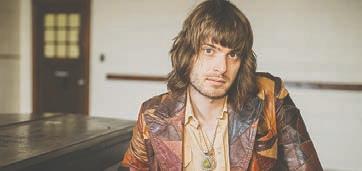
Thursday, 1/6/2022
Holidays: Minnesota Street Project
Winter Art Fair

The Project’s facilities and studio artists will transform the 1275 Lounge into a popup shop. Browse handmade ceramics, jewelry, wearables, fiber arts, fine art, woodwork, and more. All work is giftable, shippable, and created by Bay Area artists. 1 to 7 p.m. 1275 Minnesota Street.
Saturday 12/4
Holidays: Holidays on the [Bernal] Hill
A neighbor-made gift and art fair. Discover local arts, crafts, and epicurean delights. 10 a.m. to 4 p.m. For more information, including a map of participating artists/vendors: https://bit.ly/3pPeCU2
Saturday 12/4
History: Memories to Light:
Never Brighter
Commissioned by McEvoy arts, composers Danny Clay and Theresa Wong perform a score to accompany the movie collage, Memories to Light: Never Brighter, by documentary filmmaker Chet Canlas. The flick creates a honeycomb lens of Asian America by interweaving home movies from the collection of the
Outdoor yoga offers a Vinyasa style flow, linking breath to movement to foster presence, concentration, and connection while building health, strength, and flexibility. Variations offered throughout class for students to choose their level. Presented by Divine Yoga Studio. Saturdays and Sundays in December. 10 a.m. $13 .Golden Gate Park. For more information and to purchase tickets: https://bit.ly/3qU9qBj
Virtual
Wednesday 12/8
Genealogy: “DNA Tests to Support Your Genealogy Research”
At-home DNA tests have become affordable, but is it for you? Do you know how DNA works? Which DNA test will answer your questions? Which company should you use? How should you interpret your ethnicity results? What’ll you do after you receive your DNA results? These questions will be answered in this workshop. 10 a.m. to 12:30 p.m. $29. Presented by the Osher Lifelong Learning Institute (OLLI) at San Francisco State University via Zoom. Open to all. However, participants must establish an account with OLLI SF State to register. To easily establish an account: https://bit.ly/3CDUgSX. To learn more about the course: https:// bit.ly/3qXDdsF
Come be part of a Welcoming, Warm, Inclusive Faith Community
CATHOLIC CHURCH
SERVED BY THE CARMELITES
1490 19th Street (at Connecticut Street)


We are open for Public Masses . We continue to livestream all Masses. Please visit our website for the most current information.
StTeresasf.org
For more information:
Call: 415-285-5272 E-mail: info@stteresasf.org www.stteresasf.org
Join a community of master fine art printers for a holiday popup. Affordably priced original prints for home decoration and gifts available for purchase. Tours of the cooperative printshop. Afterwards, stop next door at the Museum of Craft and Design store for a special Friends and Family 21 percent discount. 10 a.m. to 4 p.m. Free. American Industrial Center, 2562 Third Street.
Saturday 12/18
Holidays: Thrive City Winter Wonderland
The magic continues with a fully immersive Holiday Spectacular at Winter Wonderland presented by Chase. Enjoy a live music showcase, artisan market with local vendors, live reindeer feedings, family and pet photos with Santa, and more. Indulge in seasonal treats, snap the perfect holiday photo and create memories that’ll last a lifetime. Event begins at 2 p.m. Free (RSVP required). For more information and to reserve a space: https://bit.ly/3oRWbhI

Music: Neal Francis at The Independent Chicago native Neal Francis will perform at The Independent as part of a U.S. tour to support his new album. In Plain Sight was mixed by Grammywinning producer Dave Fridmann (The Flaming Lips, Tame Impala, MGMT), available for streaming and purchase. After returning home from touring on the back of his 2019 debut album Changes, Francis went through a breakup and found himself living in a church, where he wrote a series of songs about honesty and resilience. Francis and his bandmates recorded In Plain Sight entirely on tape, mostly in that same church. The songs are dreamlike and reflective, anchored in the rock and soul sound that has led critics to compare him to legends like Allen Toussaint and Dr. John. 8 p.m. $20. The Independent, 628 Divisadero Street. For more information and to purchase tickets: https://bit. ly/3DA6Ofn
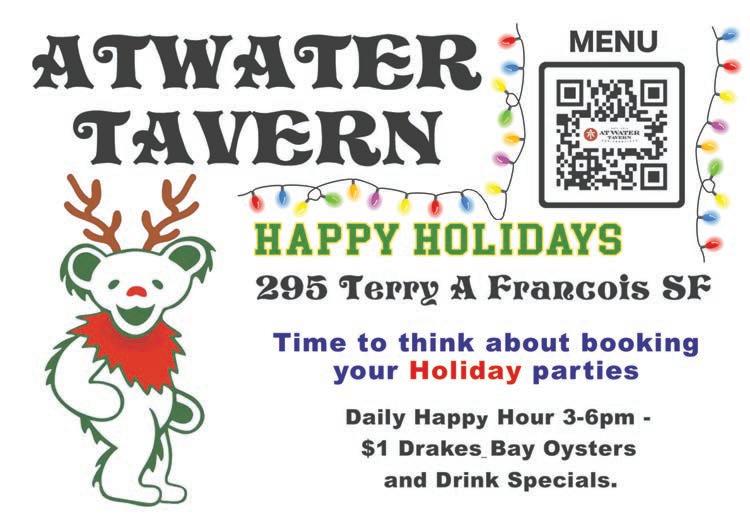


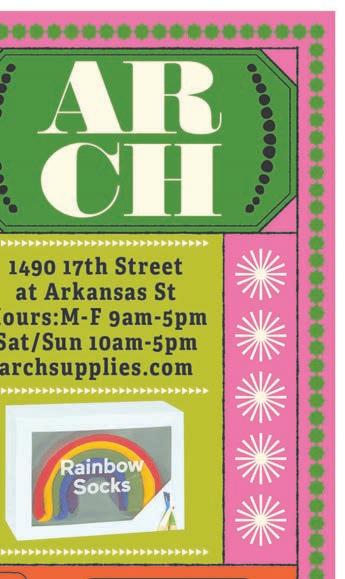
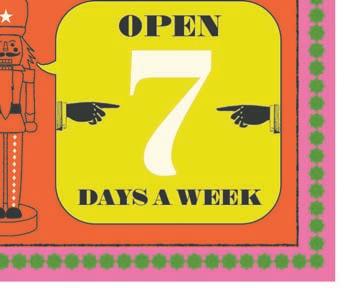
 BY JOE CASTROVINCI
BY JOE CASTROVINCI
The idea that there’s a California dream burst into popular culture in the 1960s through the music of the Beach Boys and Mamas and the Papas and continued through the collective consciousness through such movies as La La Land and Once Upon a Time in Hollywood. While the dream’s exact plot morphs depending on the person invoking it, its central theme is the ability of each one of us to reinvent ourselves, along the way perhaps becoming wealthy or famous.
California has been seen as a lucky place, a land of opportunity and good fortune. But in a time of chronically high populations of permanently unsheltered people, an absence of affordable housing, wildfires, drought, and climate change, is the California dream dead?
“The dream lives on,” longtime Mission Bay resident Karen McSorely said, “and California will continue to drive the nation and the world for as far out as we can see. California has long been at the world’s cutting edge for many reasons, and that position is not about to change.”
McSorely will focus on factors that’ll drive California’s future in “Unparalleled Imagination: The History of California Art,” a course she’ll teach next month at San Francisco’s Osher Lifelong Learning Institute
According to McSorely, Californians have a unique mix of religious and spiritual beliefs. Before the arrival of Europeans, California was home to a wide array of indigenous peoples and cultures. For many, the coming of the Spanish was a calamity whose scale and scope are only now being widely appreciated. But, the steady mixing of
natives and invaders created a blend of beliefs brought by immigrants from throughout the world, physically expressed in missions, churches, temples, mosques, synagogues, ashrams, and cathedrals.
“Even the most obscure creeds find expression here, and that gives California a unique and vital energy,” McSorley said.
Californians accommodate people from all over the world—Americans from other states, Europeans, Latin and Central Americans, Asians, and Pacific Islanders—who arrive eager to embrace the new while feeling an intense nostalgia for their homelands.
“Our unique mix of creeds is matched by our unique mix of people, ethnicities, and cultures, and it has created an energized and uniquely diverse place. California is the whole world, collected in one melting pot,” McSorley explained.
California has been the scene of intense political turmoil. The state stayed in the Union during the Civil War but displaced nearly 120,000 indigenous peoples from 1848 to 1870. For decades, political battles pitted railroads and large corporations against workers and farmers; out of those skirmishes emerged a powerful progressive movement. Japanese Americans were interned during World War II, while the Black Panthers helped lead the Civil Rights Movement, and the LGBT crusade emerged as a vital force from the HIV/AIDS crisis.
California is at the end of the American mainland, a Garden of Eden, a popular playground. That and the sunny weather encourages a state of mind open to new things and ideas, a place of renaissance for individuals, communities, futures.
Much of the United States’ economic heft is generated in California. In the last few decades, the nation’s economy has reshaped itself, now dominated by companies that started in the state: Apple, Google, Facebook, Tesla, Salesforce, Twitter, Uber and Lyft, Airbnb, Yelp, Oracle, Intel, and Adobe. Much like the Quattrocento and Cinquencento during which Europe led the world—Brunelleschi, DaVinci, Michelangelo—California is where art and science coalesce creatively behind invention, innovation, and industrialization.
For more information on Karen McSorley and her course, visit https:// olli.sfsu.edu/
to Potrero View through SF Community Power; consider including your favorite newspaper in your trust.
Correspondence
SHORT CUTS from page 2
good life is predicated on getting into Stanford University or its ilk, a shootfor-the moon mentality in which what’s at stake is one’s soul. Fortunately for viewers, kids are kids, and the movie finds a few who are funny, vulnerable, and accidentally charming. You just want to give them a hug. Along with a caring physics teacher and parents compelled to toss their own hardcover baggage at their cherished child, the film offers a glimpse into a time and place shimmering with anxiety that hopefully will soon morph into something more joyous.
Is it Pennsylvania Avenue, or Street? Local historian Peter Linenthal has an 1869 map which identifies the roadway as Pennsylvania Avenue. According to Google , a street is a basic paved traffic link within an urban area; an avenue was originally grander, wider and often lined with trees or other flora. The distinction has eroded over time. For example, real estate developers indiscriminately call new roads “avenues” to make a more grandiose impression. Pennsylvania is indeed wider than other Potrero Hill streets, with some of the Hill’s oldest homes. It’s the only state name in the Hill that’s most often termed an avenue rather than a street.
A Los Angeles couple who received invitro fertilization from the California Center for Reproductive Health (CCRH) discovered that the child to which they’d given birth wasn’t genetically related to them. The baby appeared to be a different race; subsequent DNA tests confirmed that the embryo belonged to complete strangers who in turn had received the embryo of the Los Angeles couple and delivered their baby. Both couples unknowingly raised the other’s infant for months before the mistakes were uncovered. The LA couple has filed a lawsuit against CCRH, CCRH’s medical director, Beverly Sunset Surgical Associates and In VitroTech Labs, Inc. alleging emotional distress and other impacts.
In rapidly aging Japan, more diapers are used by older, incontinent people than by babies…After a heavy rain last month villagers near Aswan, Egypt were besieged by death-stalkers, yellowish four-inch scorpions with as many as six pairs of eyes and a tail full of toxic venom. Several people were stung, though no deaths were reported…On a recent episode of “Ask the Mortician” on YouTube, Caitlin Doughty explained that during cremation titanium hip joints don’t melt. “The metal has to be removed by hand or by a large magnet, and it’s not handled as biological waste because it was never really part of the body to begin with.” She said hip and knee replacements can be recycled into road signs and car parts. Pacemakers must be removed before cremation, as intensely heated batteries can cause an explosion. Breast implants melt leaving a “gelatinous goo” on the bottom of the cremation chambers.
LIFE SCIENCES from page 7
shift between Dogpatch and Bayview.”
Katherine Doumani, Dogpatch Neighborhood Association (DNA) president, said her members are concerned that all three of Cianciarulo and Workshop1’s properties have a nebulous lab space designation.
“We see this as a workaround of a Planning Department code,” said Doumani. “We’re worried that somehow the lab spaces will not be used for life sciences. Lab space can be leased to tech companies that might otherwise occupy traditional office space. In fact, based on the zoning for these two blocks, no more than 5,000 square feet of retail and office space would be allowed per block, versus over 500,000 square feet of laboratory and industrial space as envisioned. The Third Street project proposes substantial laboratory space. Yet the drawings submitted do not yet show the building facilities, equipment and features that distinguish laboratory space from space designed for office or other general commercial uses.”
Doumani agreed with Eppler that the proposed development’s frontage “should not be a highway, it needs to connect communities.”
She added that Dogpatch residents would like a mini museum to showcase the history of the Copra Crane on the Islais Creek channel. In the 1940s, coconut meat – “copra” – was imported from the Philippines and pressed into oil by Cargill Mill workers. The crane was used to load copra meal onto outbound ships.
“This history was meant to be a part of the San Francisco Municipal Transportation Authority when they built on Islais Creek,” said Doumani. “SFMTA broke their promise. We would like to have the development use its entitlement funds to complete a path to Islais Creek and a creekside walk that should safely connect onto Third Street. The Copra Crane should be restored.”
According to Mollard, the developers want to mend the creek as part of their project. “There’s been deterioration of Islais Creek along our property line near the Third Street bridge. The banks have fallen in and there has been trash deposited near the proposed site. We envision improving the quality of the creek, eventually creating a pedestrian connection along the waterfront,” said Mollard.
Mollard said the open space at Islais Creek, as well as ground floor retail spaces and public plaza between the buildings, would be community amenities.
“From coffee shops to tasting rooms, there’s a lot of creative ways to pair retail with the development’s ground floor lab and PDR space. Currently, there are not a lot of places open in the immediate vicinity that are not behind a fence. This development would create welcoming and accessible spaces for the community,” said Mollard.

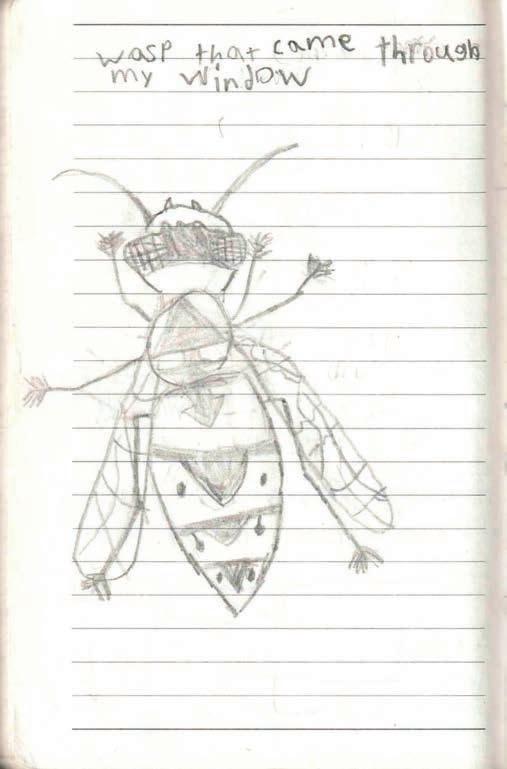



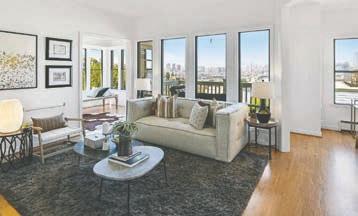




editor@potreroview.net
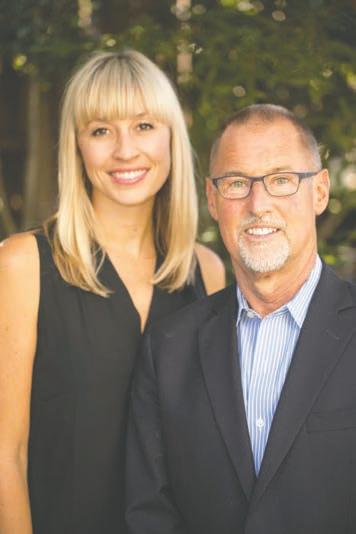
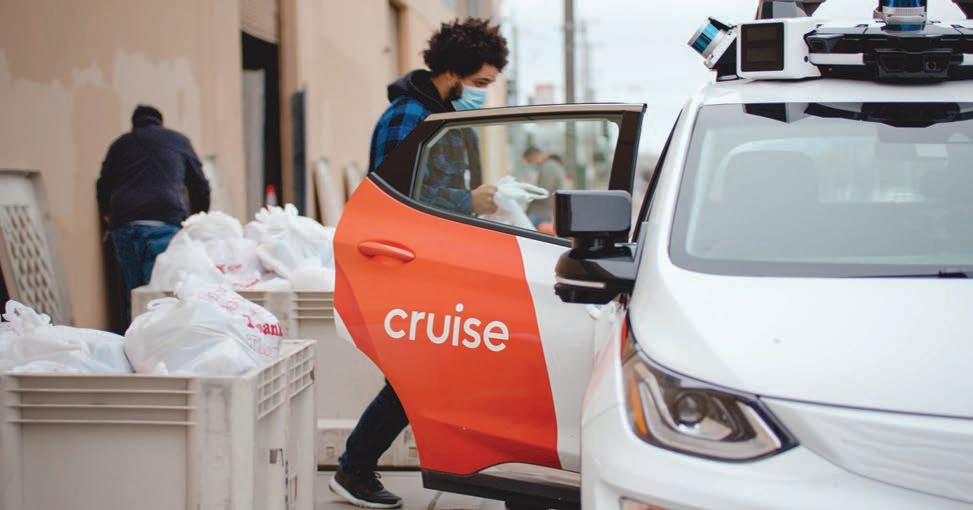

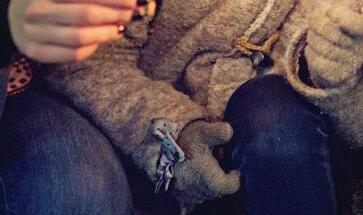


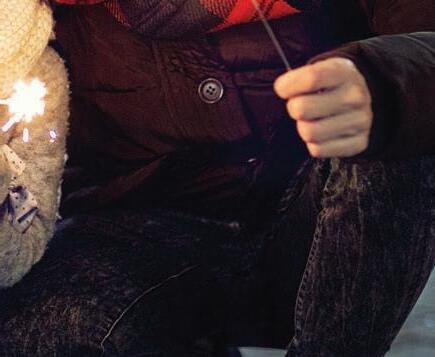









Advertising Salesperson Wanted
Friendly, organized, persistent person would be great. Quite modest base pay; commission. You won’t get rich, but you’ll meet some people and help this fine paper. Email your interest to editor@potreroview.net
Freelance Writers Wanted
Modest pay, interesting assignments. Contact: editor@potreroview.net
Subscription Salespeople Wanted
Minimum wage, intermittent work. Editor@potreroview.net
Muir Beach Studio and House
Walking distance to the beach, with the crashing waves visible and audible.
Studio: Cozy studio comfortable for two-people. Includes kitchenette and private patio. $185/night plus cleaning fee, two-night minimum. Editor@ potreroview.net or 415.643.9578.
House: Three bedrooms, two full baths, with two decks. $350/night, three-night minimum. Editor@ potreroview.net or 415.643.9578.
The View accepts legal notices. Please contact: production@potreroview.net; 415.643.9578.
Got something to sell? Have a service to provide? Each classified ad is $25 for up to 200 characters. www.potreroview.net/advertise
tor of Friends of Jackson Park (FOJP), a nonprofit that advocates for park improvements and associated funding, said draft renovation plans were developed before the COVID-19 pandemic.
The Planning Department anticipates completing necessary environmental review by February 2022. The goal is to present the San Francisco Recreation and Parks Commission with the final design for approval this summer.
“The project can’t be put out for bid until all money is in hand. Currently we’re waiting for Eastern Neighborhoods Citizens Advisory Committee impact fees, which are scheduled to be allocated for our project in fiscal year 2024/2025. Once we receive all the money, SFRPD will put the project out to bid…they select a contractor, construction can begin,” said Deckenbach.
FOJP has design documents, urban planning documents that define the park’s layout and purpose.
“Once (these are) approved, the architects will produce the construction drawings,” said Deckenbach.
“Increased neighborhood usage of the park for community gatherings and a place to relax safely outside the home during the pandemic shows why the renovation is necessary. Softball and baseball have returned and are important uses of the park. Yet we have to carve out more space for unprogrammed uses,” said J.R. Eppler, president of the Potrero Boosters, whose members live in Potrero Hill, Dogpatch, and Showplace Square.
According to Lauren Ewald, director of Fletcher Studio, the landscape architecture firm selected to design Jackson Park’s renovation, plan changes could include moving, improving and expanding the clubhouse, relocating the ball fields, adding picnic areas, and asking the San Francisco Department of Public Works to install approximately 50 new “screen trees” around the park’s perimeter.
“There are currently 51 trees around Jackson Park. We plan to have 110 trees around the park. That’ll double the amount of trees that line the park. We want to take the perimeter wall around the edge of the property and make it thinner. That way we push out the space for the park. You’ll be able to easily walk into the park from any side,” said Ewald.
The San Francisco Art Enrichment Ordinance requires that two percent of gross construction costs of new parks be allocated to public art, roughly $60,000 in the case of Jackson Park. Funds can be used to create panels near recreational courts and façades near the clubhouse. It’d be difficult and costly to preserve existing pieces, such as “The Child Sees: Big Snail Fish,” a set of glazed ceramic tiles set in concrete near the clubhouse.
The artist approval process will occur in steps. The Commission will release an invitation to bid. Interested artists can submit applications with their qualifications and images of past work. A panel consisting of a Commission staff member and two arts professionals will shortlist artists for consideration by a larger team, usually composed of a commissioner, client representative, two arts professionals, and a community member, which’ll select three artists to develop sitespecific proposals.
The three artists’ proposals will be posted online for public comment, usually for two weeks. The larger team then meets to interview the artists, consider public comment, and recommend a proposal to move forward. The recommendation is presented to the visual arts committee, a subset of the full Commission, with the final decision rendered by the full Commission.
According to Deckenbach, residents and FOJP are concerned that the park is named for Andrew Jackson, who engaged in multiple human rights abuses against Native Americans throughout his tenure as president.
Dr. Jonathan Cordero, Association of Ramaytush Ohlone (ARO) executive director and a visiting professor at the University of California Hastings School of Law, said ARO is discussing whether it’s interested in having Jackson Park renamed to reflect the identity of the Ramaytush Ohlone people, who inhabited the San Francisco Peninsula when the Spanish first arrived.
“We prefer not using words that have spiritual meaning. Yet if the park is renamed with a Ramaytush Ohlone word or phrase, the terms need to have meaning to us. Right now, as a group, we’re discussing what words might be appropriate. We want to be deliberate and mindful in what words we choose,” said Cordero. “We’re consulting with a linguist to examine the origin of a couple of the words on a list originally


Let your neighbors know what you have to offer!
PREPAY: 2” x 2” 2” x 4”
6 months $345. $690. 12 months $555. $1,110.
created by non-Native scholars because some may be borrowed.”
“Surveys and community meetings are always helpful. Any type of engagement that gets more parks users to understand and agree on what needs to be done is important. The more members in the community that come together and speak loud and clear, the better,” said Briony Doyle, a FOJP board member.
“Community action and staying the course are the biggest driving factors to keep the renovation on track,” Elain Sprague Stuebe, FOJP board member, said. “The squeaky wheel gets the grease. We keep reminding the City of what we want and that we’d like the work to get done soon.”
Stuebe added that having meetings over Zoom has helped residents stay focused.
“It’s great to be in person, but meetings can go astray. Holding meetings over Zoom allows us to eliminate obstacles such as getting the clubhouse ready, everyone getting parking, and arriving on time. This meeting was a milestone in seeing our vision so clearly through the series of organized presentations. We came together as a neighborhood and understand that the heart and soul of Jackson Park is having fun,” said Stuebe.
area contains most of the population and activities in the neighborhood,” said Agid.
Agid said Mission Bay started coming to life in 2016.
“That’s when you stopped seeing as many vacant lots and you began to see the influx of small businesses. Now, when you cross Mission Creek, Channel Street and Long Bridge Street, you feel like you’re entering into a real neighborhood. Spark’s Social, a food truck park at 601 Mission Bay Boulevard North, Mission Bay Park along the Creek, the Dogpark and the children’s playground have become meeting places for the neighborhood. In the last three years, Mission Bay began to come alive. Then COVID stopped it all. Now it’s starting up again, with most activity outdoors,” said Agid.
Peggy Fahnestock, SBRMBNA treasurer, said the influx of new residents has dramatically improved neighborhood life.
Please contact: 415.643.9578
marketing @ potreroview.net production @ potreroview.net
“Before that, this area between the UCSF campus and the Giants ballpark was very remote. Now I’m part of a weekly walking group. The Mission Bay branch of the San Francisco Public Library has a nice book club…as well as Stagecoach Greens, the outdoor mini golf course at 1379 Fourth Street…There are nice parks and playgrounds for families. One of the things that could change is that individual apartment complexes have gyms. That means there are not a lot of gyms in the neighborhood for people to mix,” said Fahnestock.
Fahnestock said Mission Bay could use more activities for children and teenagers.
“826 Valencia’s after-school programs to assist under-resourced students with writing skills are great. We could use more outreach programs like that, as well as the development of the Mission Bay school,” said Fahnestock. “There’s a lot of petty crime, especially car break-ins. We haven’t seen much visibility of law enforcement officers. There are a number of people experiencing homelessness in the neighborhood. There are people who sleep in front of the Mission Bay Branch library every night and on benches in Mission Creek Park. There are also many people who wander along the CalTrain tracks where King Street turns into I-80.”
According to Sarah Davis, a second-generation Mission Bay resident who has lived in the neighborhood for more than 35 years, the community is at the point where “the dream is almost done. There are only a handful of new buildings left to build. Thirty years ago, the only thing here was Mission Creek Harbor and some industrial warehouses. For years nobody in the City paid much attention to Mission Bay. When the pile driving started to happen, everyone was in shock.”
Davis said new residential towers now block her view of the sunrise over the Oakland hills.
“Yet it’s wonderful to see the families with children and all the activity. We’re still missing big pieces of the puzzle. These include the Mission Bay school, the last big parks for active outdoor activities, and better public transportation to link Mission Bay to the rest of the City,” said Davis.
According to Laura Kurtzman, UCSF senior public information repre-
sentative, the University serves Mission Bay in multiple ways.
“This includes providing patient care at Mission Bay, where we have a pediatric emergency department…will have an urgent care clinic for adults in a building that is scheduled to open in late 2024. We continue to help members of the public get vaccinated against COVID-19. We have been instrumental in the City and County of San Francisco’s successful vaccine drive,” said Kurtzman. “Our gyms and pools, including those at Mission Bay, provide wellness benefits for the community. While in-person attendance was interrupted for 16 months by the pandemic, the Mission Bay facility reopened in August to those who can show proof of vaccination. We have invited members to return.”
Kurtzman said UCSF is negotiating final details on the land to be transferred to serve as the Mission Bay school site. The campus will host a prekindergarten through fifth grade school, a linked learning hub for high schoolers, and professional development space. The San Francisco Unified School District is looking for residents interested in serving as community liaisons for the campus, to increase engagement and help design academic programs.
“In fall 2020, UCSF and SFUSD agreed on a letter of intent that defined the general terms for transfer of Mission Bay Block 14. (We hope to) complete (negotiations) shortly,” said Kurtzman.
It’s almost certain that Mission Bay will be assigned to a new Board of Supervisors district next year. After 2020 U.S. Census data became available, the San Francisco Redistricting Task Force began to recraft the City’s supervisorial districts, with the goal of having 79,545 people in each district.
“Redistricting is certainly going to be a challenge. District 6, the district in which Mission Bay sits, is going to shrink. District 10, which contains Potrero Hill, Dogpatch, and BayviewHunters Point, and District 6 have grown. If Mission Bay goes to District 10, District 10 will likely need to be reduced,” said Haney.
DOGPATCH HUB from front page
“We have enough office space,” he said of the Premier Structures’ plan, “and we don’t need more.”
Premier Structures proposed three floors of office space, dining, and a community gathering area. It scored just one point higher than Dogpatch Hub out of the Port’s 650-point scale, with Dogpatch Hub receiving 434 points, Premier Structures 435. The Port declined both concepts.
“For the Kneass building, I have authorized staff to terminate the RFP process because neither proposal adequately met the stated objectives of the solicitation,” said Elaine Forbes, of Port of San Francisco executive director.
“The weakness of our proposal was the financial return to the Port, whereas the weakness of the other proposal was the lack of community element,” Eppler said.
According to Port Development Project Manager Jamie Hurley, Premier Structures scored higher due to its
financials; Dogpatch Hub was strong in public programming.
Public comment supporting Dogpatch Hub pointed to the need for a community gathering space in light of “explosive growth” in the area and underscored that the Hub was “truly community based,” with a budget $10 million less than the one proposed by Premier Structures.
Dogpatch residents urged the Port’s Southern Advisory Committee, which addresses issues in the Mission Rock, China and India basin area, to recommend that the Port re-issue the RFP with “clear values that reflect the community’s comment in favor of community benefit versus revenue.”
“It has been a long time,” said Friends of Dogpatch Hub committee member Katherine Doumani of the effort to secure a location, “and COVID has added layers of complexity. The board has been working hard on this, taking longer than we would have liked. Nothing has gone as anticipated, but we’ll succeed in the end.”
“The neat thing about the Hub is that it can fit into a variety of sites and locations,” Eppler said.
Ramsbacher agreed, “I’m confident that we will find a home in the Dogpatch.”
The committee is investigating other potential sites, including to lease, buy, or engage in a joint venture, according to Ramsbacher. He maintained that the first choice would be the historic Potrero Police Station at 2303 Third Street, as it’s “perfectly situated” and “Dogpatch identifies with it.”
While the San Francisco Police Department had agreed to renovate the building for their own purposes with bond funds, those monies fell through. The structure’s future remains unsettled.
“Scott School could be another possibility,” said Doumani, “though the building currently has tenants.”
Friends of Dogpatch Hub participates in Dogpatch Neighborhood Association and Potrero Boosters meetings.
“We have a robust attendance on Zoom,” Eppler said.
While Friends of Dogpatch Hub hopes a new RFP will be issued, “the timeline is fuzzy,” according to Eppler.
Dogpatch alone.
This year’s Community Challenge applications are due December 3, with grantees announced in the Spring. Applicants must match thirty-five percent of the funded amount. Lila Travis, De Haro Block Community Block Garden’s Board secretary, who manages an urban wildlife rescue nonprofit, noted that donations and volunteer hours can be counted for matching. She also pointed out that projects must be sponsored by a nonprofit; the Alliance provides this status. Without such a fiscal sponsor, community efforts might “die on the vine,” she said.
The De Haro Community Block Garden wanted to pave Upper De Haro, a project that’s been contemplated since the 1930s, and which’d render the street “accepted,” making it the City’s responsibility. However, not all Block residents favored that option. Garden organizers pivoted to becoming a “street park,” under DPW’s jurisdiction instead of the Department of Parks and Recreation. As a street park they
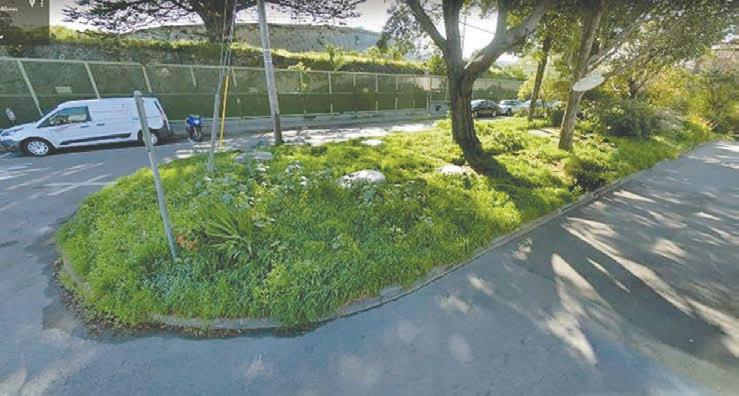
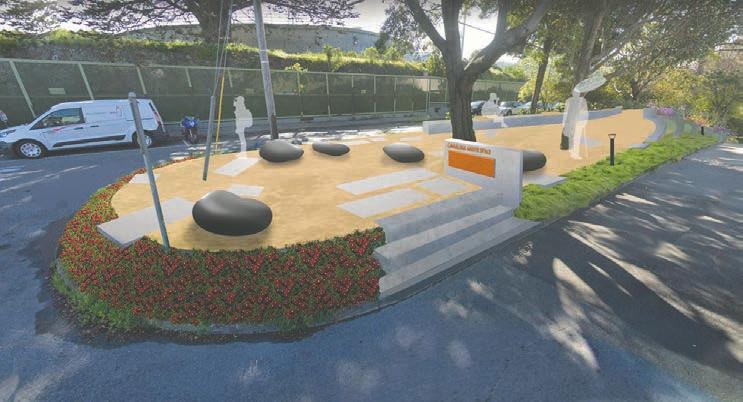
could request help disposing of debris and vegetation, in addition to delivery of woodchips for reducing soil erosion due to rain.
Just a little up the hill, Carolina Green Space has also been working to improve a street median. De Haro Block members contacted Cathryn Blum, the Green Space’s chief instigator, who referred them to the architectural firm Terrain Studio. De Haro Block Community Garden members decided to dramatically alter the median, install measures to prevent soil erosion, as well as future street narrowing. However, there’s a cap on construction costs for Challenge grants; a DPW representative recommended pursuit of a Watershed Stewardship Grant instead.
That grant, also administered by the Community Challenge Grant Association, focuses on constructionintensive projects rather than community beautification. Travis noted that this funding source would enable the Block to transform the median into a rainwater garden, with runoff diverted away from sewer drains to irrigate vegetation.
The Carolina Street median is also owned by DPW, similarly poorly maintained. Several years ago, a mugging prompted residents to renovate the median as the Carolina Green Space. They likewise partnered with SF Park Alliance and were awarded a $132,000 Community Challenge to revamp the space as part of the “Skyline Terrace” project in 2020. The Green Space also received “addback” funding.
Addback is part of the municipal budget process. The mayor submits a budget to be approved by the Board of Supervisors; the Supervisors’ budget analyst reviews it and suggests changes. The sum of any reductions is reassigned in the final, approved, budget as “addbacks.” The Municipal Code forbids supervisors from directly influencing or explicitly suggesting whom should receive these funds; they may only allocate them to a particular department or program. However, a 2008 Civil Grand Jury report suggested the process tacitly permitted corruption. City Controller Ben Rosenfield
has reminded the Board of Supervisors that “addbacks” aren’t funds for them to grant to nonprofits of their choice.
Blum noted that developing the Carolina Green Space required DPW approval for an American Disability Act-compliant ramp, tree removals, and changes to the median. She also mentioned the need for a “tree hearing,” remarking that “for each tree we remove, we have to plant a replacement.” Stormy weather in October damaged one tree on the street, which was already on the chopping block.
In 2006, San Francisco passed an ordinance defining “significant” and “landmark” trees. Removal of these trees requires a permit, with neighborhood notice, as well as replacing it in most cases.
The Carolina Green Space has issued a request for proposals for its Skyline Terrace project. It hopes to select a contractor this month.
San Francisco Recreation and Park has a number of projects in District 10, including the Blue Greenway, 13 miles of parks and trails spanning from China Basin to Candlestick Cove.








